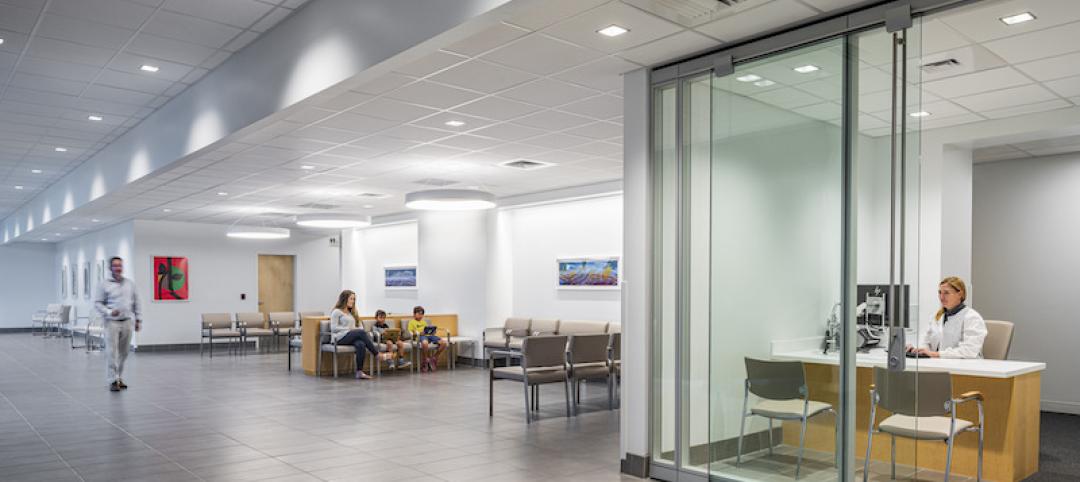In 2013, Americans took 10.7 billion trips on public transportation—the highest in 57 years. It’s also been said that by the mid-2030s, self-driving vehicles could be deployed, altering the commuting movement altogether. What does this mean for development projects in cities where a significant portion of land is currently devoted to parking?
To throw more statistics out there: this New Yorker article states that more and more Americans are living alone, with a third of all U.S. households having only one occupant. How does this rise in single occupancy housing challenge the design of standard parking ratios?
In spite of the trend away from multi-car residences, not much has changed with regard to parking spot allocations within apartment buildings and other multi-unit residential developments. But should it be signaling a change? How could and should these developments be designed differently to accommodate this type of consumer shift?
Site planners and developers are well aware that today, available on-site parking is a driving factor in nearly every development and redevelopment project that is pursued. A site’s potential to produce financial profit, or its yield potential, is what drives the early-on decision of purchasing a building or land.
If parking is limited, it might mean an area or property is not a viable location. But, as consumer behaviors and parking needs are changing, it is important planners and developers have a keen awareness of trends along with the ability to respond accordingly to the accelerated rate of change we are experiencing.
Some things to think about when considering a property that may support this flexibility and improve the long-term viability of a development include:
• Shared Parking Strategies: Overbuilding of parking can be avoided by pursuing a development strategy that shares spaces with varied and compatible uses. Effective shared parking can leverage additional yield within a new project. Sharing may be with either on-site or walkable adjacent uses. Even a retail leasing strategy can effectively reduce parking needs by considering differing peak usage times for the mix of compatible businesses.
In such scenarios, no one retailer dominates parking through the entire day and peaks may even vary on days of the week. This is often the case for mixed-use developments with office components. Complimentary usage times occur from differing activity use of building occupants during the week and weekend. Allocating space for a specific group during daytime work hours then allows the space to serve another tenant that draws more after-hour crowds for activities like shopping and dining.
• Anticipation of Second Generation: Densification, re-tenanting and new transit options can all have an impact on a development’s evolving parking needs and associated development potential over time. Planned inherent flexibility in an initial development will pay dividends over time. While an aggressive, cost-effective parking strategy may be required for initial development, it’s valuable to have a longer-term master plan that accounts for change and growth. If parking demand decreases, a developer may want to evaluate the repurposing of areas no longer needed for parking, modifying uses, or adding additional floor area.
It is never too early to consider how your property may evolve as consumer patterns and development preferences change. It not only helps the initial investor/developer to understand the full potential of the site, but should the decision be made to put the site up for sale, being able to show interested buyers the long-range site potential will most definitely be a selling point.
• Density Bonuses: It is increasingly common for different jurisdictions to offer incentives to minimize onsite parking. Similarly, there may be incentives to leverage as much development as possible from existing parking. These incentives vary widely and may include bonuses for providing covered or enclosed bicycle parking, bike share stations, car share parking, and EV charging stations.
Co-locating with transit often allows for significant added development as compared to development not transit based and using conventional parking ratios. In the most urban of situations, onsite parking may not be required at all. Public – Private Partnerships (3Ps) also offer opportunities to reduce developer provided parking spaces. In walkable locations, it may be possible to use existing offsite parking within demonstrated easy walking distances.
Lower standard parking ratios may also be feasible for residential properties with a high percentage of small and single occupancy units. When initiating a development, it’s worthwhile to explore such opportunities to maximize yield and return on “the right” amount of parking. And just as importantly, anticipate that “the right” of amount of parking will continue to evolve over time and through the maturity of a market.
It’s beneficial to have a site planner with a solid understanding of both short- and long-term growth plans for corridors where a project may be located. As we at GS&P continue to see an uptick in due diligence requests regarding potential development sites, it’s key to apply our understanding of how the local market is reacting to or following on larger national/ international trends.
But, the most important thing we’ve been able to help our clients realize is the importance of flexibility and the value it brings to their site and its long-term success. While much in the development world is impacted by changing technology and consumer behavior, there are many questions to ask – but potentially chief among them is, “will on-site parking remain king?”
More from Author
Gresham Smith | Aug 17, 2023
How to design for adaptive reuse: Don’t reinvent the wheel
Gresham Smith demonstrates the opportunities of adaptive reuse, specifically reusing empty big-box retail and malls, many of which sit unused or underutilized across the country.
Gresham Smith | May 24, 2023
Designing spaces that promote enrollment
Alyson Mandeville, Higher Education Practice Leader, argues that colleges and universities need to shift their business model—with the help of designers.
Gresham Smith | Apr 24, 2023
Smart savings: Commissioning for the hybrid workplace
Joe Crowe, Senior Mechanical Engineer, Gresham Smith, shares smart savings tips for facility managers and building owners of hybrid workplaces.
Gresham Smith | Mar 20, 2023
3 ways prefabrication doubles as a sustainability strategy
Corie Baker, AIA, shares three modular Gresham Smith projects that found sustainability benefits from the use of prefabrication.
Gresham Smith | Jan 19, 2023
Maximizing access for everyone: A closer look at universal design in healthcare facilities
Maria Sanchez, Interior Designer at Gresham Smith, shares how universal design bolsters empathy and equity in healthcare facilities.
Gresham Smith | Dec 20, 2022
Designing for a first-in-the-world proton therapy cancer treatment system
Gresham Smith begins designing four proton therapy vaults for a Flint, Mich., medical center.
Gresham Smith | Nov 21, 2022
An inside look at the airport industry's plan to develop a digital twin guidebook
Zoë Fisher, AIA explores how design strategies are changing the way we deliver and design projects in the post-pandemic world.
Gresham Smith | Feb 13, 2022
Helping maximize project dollars: Utility coordination 101
In this post, I take a look at the utility coordination services our Transportation group offers to our clients in an attempt to minimize delays and avoid unforeseen costs.
Gresham Smith | May 7, 2021
Private practice: Designing healthcare spaces that promote patient privacy
If a facility violates HIPAA rules, the penalty can be costly to both their reputation and wallet, with fines up to $250,000 depending on the severity.
Gresham Smith | Mar 4, 2021
Behavior mapping: Taking care of the caregivers through technology
Research suggests that the built environment may help reduce burnout.
















